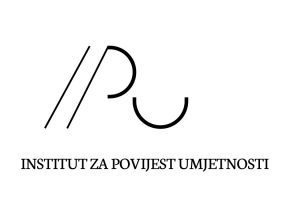
Stella Fatović-Ferenčić and Martin Kuhar gave several interviews regarding the coronavirus pandemic during the quarantine period (March 2020).[1] A vain 21st century person struggles to accept the fact that a medieval method such as quarantine appears to be practically the only tactic in fighting this disease. Ancient knowledge on the procedure with which people, animals and objects considered to be infected were being separated from the rest was excavated and strongly contested. During this period we were often reminded of the fact that quarantine was established for the first time in Dubrovnik in 1377 during the Black Death. A city whose economy was based on commerce decided to defend itself by isolating all incoming ships and passengers from the affected territories. The isolation first lasted for 30 (trentina) and later for 40 days (quaranta) during which those who wanted to enter Dubrovnik were isolated on nearby islands of Mrkan and Bobara, and later in Cavtat, Lokrum and elsewhere. As collaborators on the project Exposition: Themes and Aspects of Croatian Photography from the 19th Century until Today, Ana Šverko and her team proposed to organize an international conference Watching, Waiting, as part of a week of events in scholarship and research Discovering Dalmatia VI, precisely at the time when the story about quarantine in Dubrovnik was being constantly retold, and when all of us, scared just as a medieval man, watched empty streets, stores and parks, and waited for new information on the disease engulfing the planet. In such a context, a search for photographs stored at the former Museum for the History of Health founded in Zagreb in 1944 within the Croatian Medical Association – and now kept in the Croatian Museum of Medicine and Pharmacy CASA – became an imperative in trying to identify those lonely places in Dalmatia whose purpose to preserve public health is still instantly recognisable. Using these photographs for the future conference, Stella Fatović-Ferenčić and Martin Kuhar will try to tell a story about emptiness and isolation and their role in public health, and about timeless quarantine that saved lives not only in the past, but during the present as well.
[1] Ivo Lučić, “Pandemije i bolesti su protagonist ljudske povijesti”, https://www.jutarnji.hr/life/zdravlje/pandemije-i-bolesti-su-protagonisti-ljudske-povijesti/10247185/, Tamara Marković, “Povijest nas uči, neke epidemije isle su u valovima”, https://vijesti.hrt.hr/587498/povijest-nas-uci-neke-epidemije-isle-su-u-valovima, http://www.meridijani.com/article/radimo-dalje-od-kuce-unatoc-potresima-u-zagrebu-i-pandemiji, Tanja Rudež, U sprečavanju koronavirusa mnogi se okreću starim metodama izolacije: Prva karantena u svijetu uvedena je 1377. godine u Dubrovniku, https://www.jutarnji.hr/life/zdravlje/u-sprecavanju-koronavirusa-mnogi-se-okrecu-starim-metodama-izolacije-prva-karantena-u-svijetu-uvedena-je-1377-godine-u-dubrovniku/10006228/, Ivo Lučić, “Karantena je hrvatski brend”, https://www.poslovni.hr/hrvatska/karantena-je-hrvatski-brend-4222647.


